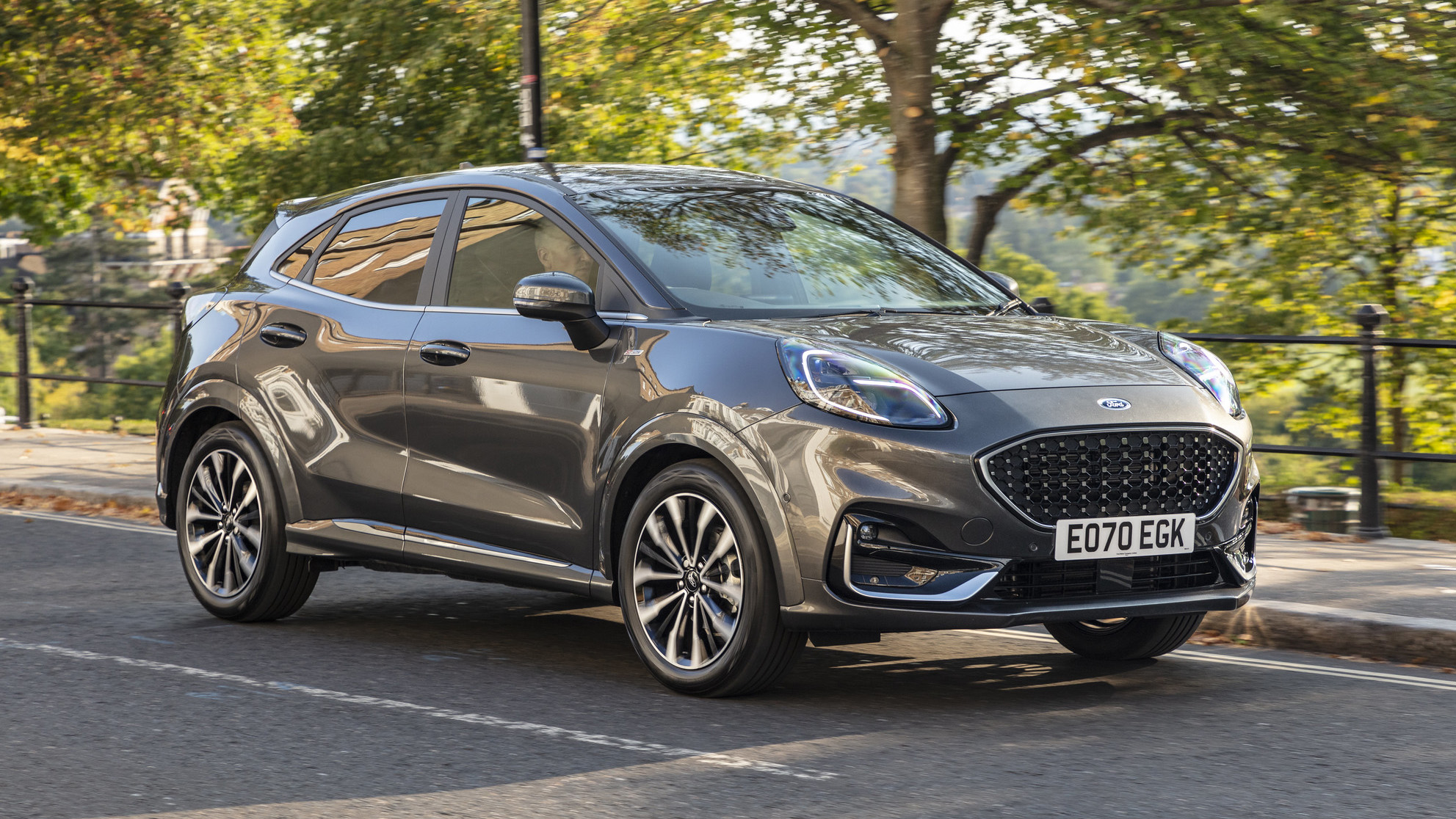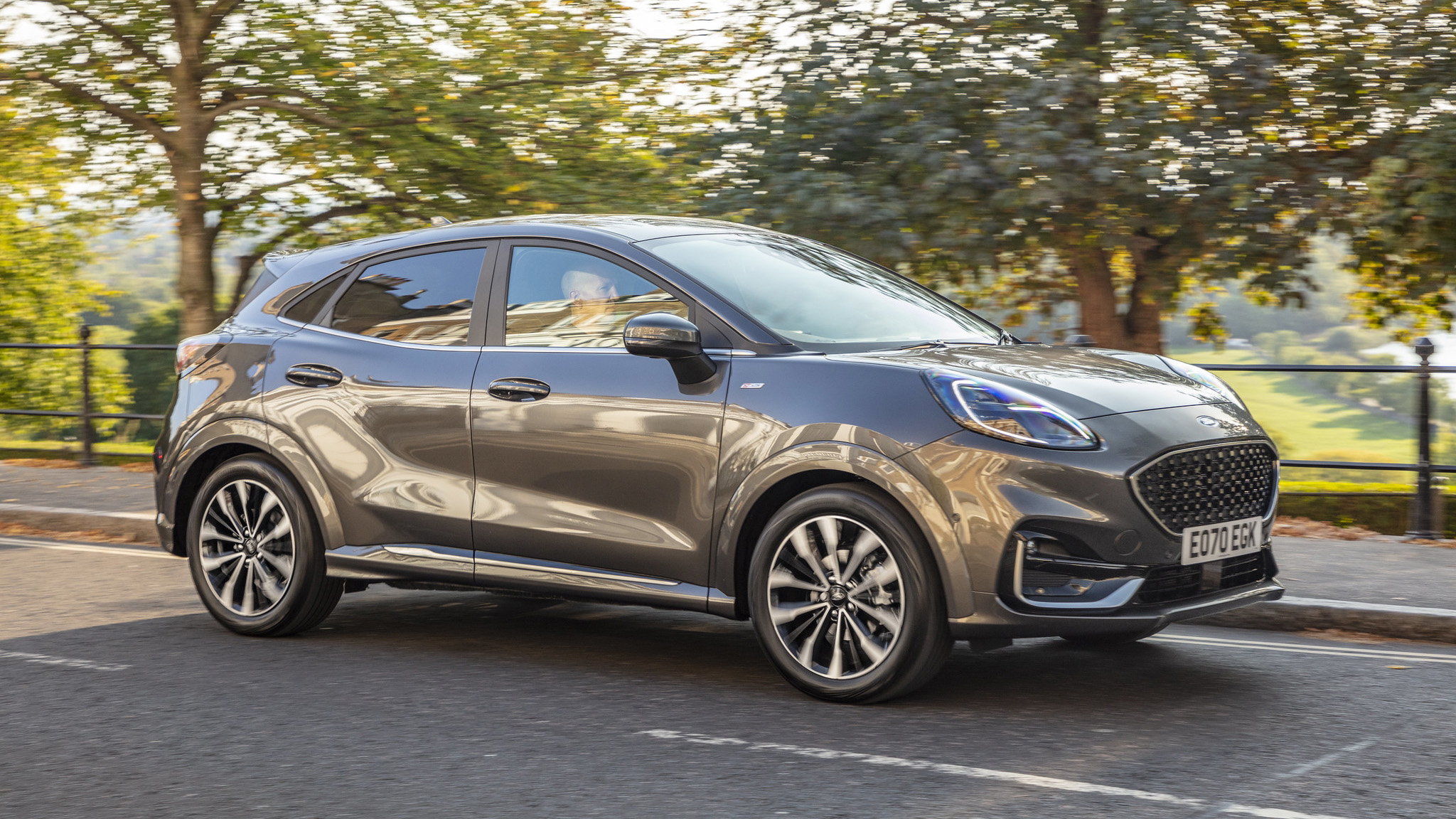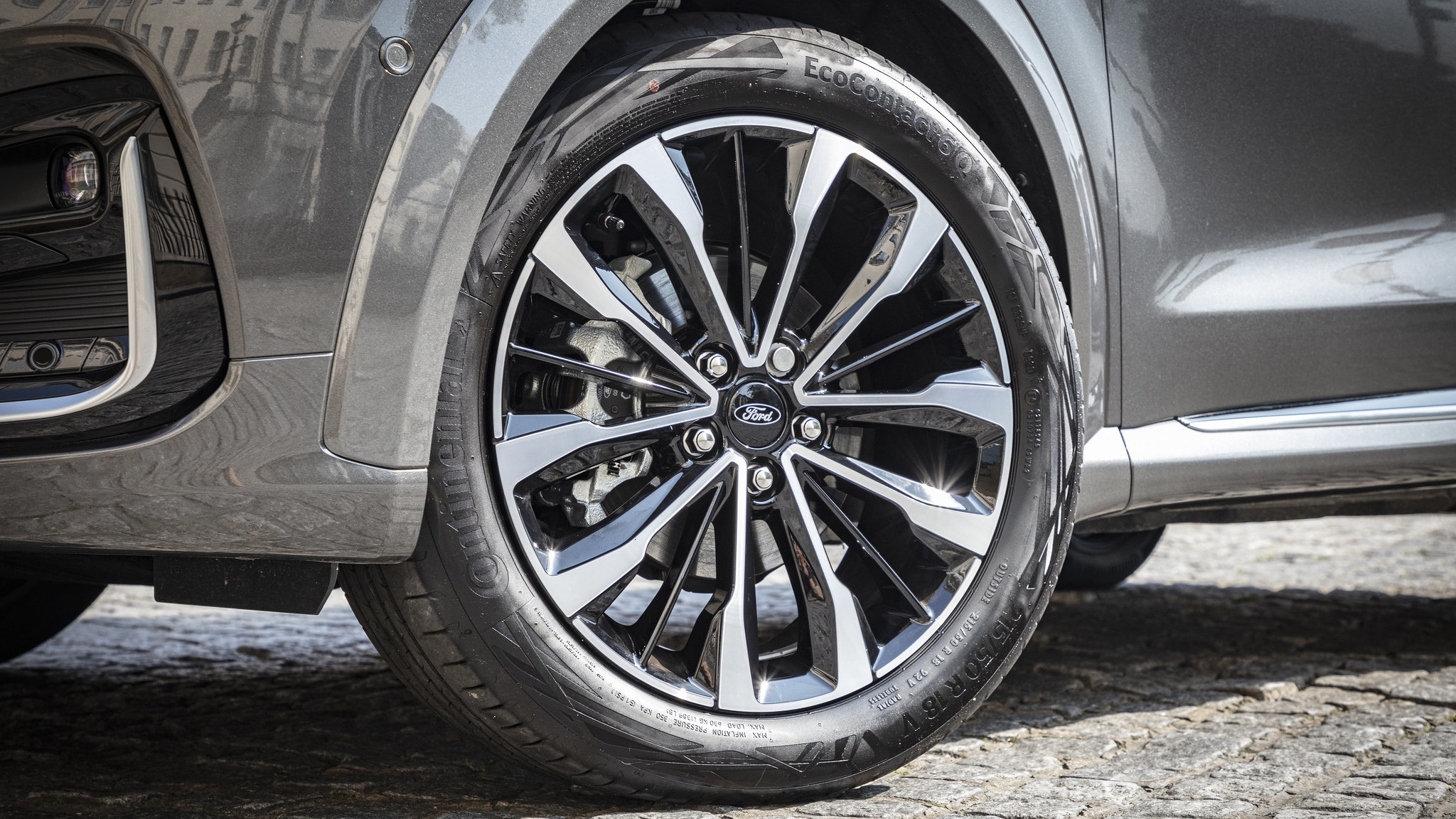
SPEC HIGHLIGHTS
- BHP
125bhp
- 0-62
10.2s
- Max Speed
116Mph
What on earth has happened to that Puma’s grille?
Interesting, isn’t it? It’s a sort of speckled chrome vajazzle-look that signifies this is the Puma in its poshest spec (if not the most expensive, now that the full-fat ST has landed).
It’s called the ST-Line X Vignale and prices start at £25,340 – although the one we’re testing here is actually £28,140 with some extra driver assistance tech and shiny paint. You’ll recognise the Vignale name from previous plush Fords, and when combined with the ST-Line X trim on the Puma it brings exclusive 18-inch alloy wheels, a premium-spec interior and plenty more chrome besides the grille.
That seems like a lot of money. What’s under the bonnet?
It is rather. Especially when the new Puma ST – complete with its 197bhp 1.5-litre engine – can be had for £28,495. The ST-Line X Vignale (we’ll shorten that to just Vignale for all of our sakes) makes do with the standard Puma’s 1.0-litre three-cylinder petrol in 123bhp form.
Instead of the fantastic six-speed manual gearbox and mild-hybrid setup though, this one’s running a seven-speed automatic that can’t be paired with any battery boost. That means it’s slower from 0-62mph at 10.2 secs (vs 9.8 secs for the 123bhp manual) and produces more emissions (141g/km vs 129g/km), but because we live in a world that makes no sense, it also carries a £1,600 premium over a manual with the same power output. It’s actually more expensive than the 153bhp manual example too. Whisper it: change gear yourself.
How does it drive, then?
Well, speccing a Puma in Vignale trim doesn’t really affect the way it drives. The only noticeable differences are the slightly more pronounced road noise and the firmer ride as a result of those 18-inch wheels – but ST-Line X cars come with alloys in that size too, and the Puma is still a reasonably well refined crossover.
The biggest dynamic difference here comes from the auto box. There’s not a huge amount of torque from the little three-cylinder engine (just 148lb ft) and the dual-clutcher does tend to hold high gears that make the Puma feel a little sluggish. In our standard Puma review we noted that the little EcoBoost was best revved high, but the automatic takes away that morsel of opportunity. Unless you select sport mode of course, but then the Puma favours lower gears and you’ll get plenty of engine noise in the cabin. Buy a manual and try your hand at playing Goldilocks.
You will still be able to get decent fuel economy despite the lack of a mild-hybrid system. We averaged 40mpg with a mix of motorway and town driving. Plus, the standard Puma’s impressive steering and body control remain, so it’s still one of the better driving crossovers.
Top Gear
Newsletter
Thank you for subscribing to our newsletter. Look out for your regular round-up of news, reviews and offers in your inbox.
Get all the latest news, reviews and exclusives, direct to your inbox.
Is the interior posh given that it’s a Vignale?
There is plenty of kit. Vignales get full leather heated seats (with a massage function in the front) and a heated leather steering wheel. There’s plenty of other soft-touch materials on the dash and doors too, as well as some carbon-fibre-look trim in your eyeline.
Just because it’s posh, that doesn’t mean it isn’t practical either – the Puma’s well-advertised MegaBox remains to add some useful extra boot space and there’s decent room in the rear seats. Privacy glass is standard though and does make it a bit dark back there.
How would you sum this up, then?
If we’re honest, we’d probably avoid both the auto gearbox and the Vignale trim. You can add all the leather you like, but it just doesn’t feel special enough inside to justify the premium over other Pumas. Plus, when the manual is so good and comes with extra emissions tech, there really is no reason to choose the two-pedal car.
Once again our advice is to save a bit of your hard earned cash and pick a mid-spec model. Proper consumer advice for you.
Score: 6/10
Featured

Trending this week
- Car Review
BMW 1 Series






